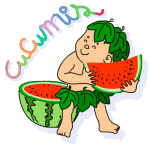 | |
|
Uppruna tekstur - Onnur mál - Nômaku sanmanda bazaradan senda makaroshada...Núverðandi støða Uppruna tekstur
Hesin teksturin er tøkur í fylgjandi málum:  
 Hendan umbidna umseting er "Bert meining". | Nômaku sanmanda bazaradan senda makaroshada... | | Uppruna mál: Onnur mál
Nômaku sanmanda bazaradan senda
makaroshada sowataya un tarata kanman | Viðmerking um umsetingina | mantra de evocação do buda fudo myo-o protetor das artes marciais e do aikido.
Recitarei este mantra sempre antes dos treinos, mas gostaria que meus alunos conhecessem seu significado na lingua natal. |
|
Rættað av goncin - 12 Desember 2007 07:55
Síðstu boð | | | | |
11 Desember 2007 15:05 | | | | | |
11 Desember 2007 23:24 | | | This is not japanese.
Actually,this mantra is used in buddhism.
Buddhist mantra is almost Sanskrit.
I examine meaning of this mantra in Yahoo 知æµè¢‹
which is the place to ask question.
Does it make sense? | | |
12 Desember 2007 02:11 | | | Hi goncin,
ミãƒã‚¤ãƒ« is right, this is a mantra.
Japanese (Buddhist) mantras are Japanese homophonic approximations of Chinese homophonic approximations of Sanskrit originals, and so are VERY distant from the original Sanskrit! 
So this isn't actually Sanskrit as such, it's a version of a Sanskrit mantra, pronounced with Japanese pronunciation of Chinese pronunciation.
Buddhist philosophy is my specialty, so if you want I could perhaps find the original Sanskrit for this. | | |
12 Desember 2007 07:55 | | | Ian and Mihairu,
Thanks for your help. 
I'll mark this text as "Unknown language". Ian, if you could find the original, it would be fine, but don't you spend your efforts too much for that.  | | |
22 Januar 2008 17:33 | | | Que prazer encontrar um aluno de Maruyama Sensei. Ele não vai se lembrar de mim, mas tenho boas lembranças dele.
Sou monja Zen Budista e, pesquisando para dar informações para os meus alunos, encontrei a seguinte explicação sobre o Fudô Myô:
No link abaixo encontra-se uma tradução da mantra, com a seguinte informação:
nomaku sanmanda bazaradan senda makaroshada sowataya un tarata kanman
Homage to the all-pervading Vajras! O Violent One of great wrath! Destroy! un tarata kan man
http://www.aetw.org/jsp_buddhist_mantras.htm
Nesta página, encontra-se uma reprodução da mantra em sânscrito.
http://www.aetw.org/jsp_fudo_myo_o.htm
tudo de bom.
| | |
23 Januar 2008 04:32 | | | Hello Monjalsshin,
Thank you for the links to those pages! 
Unfortunately, they do not show the original Sanskrit in alphabet letters, and I can't read Sanskrit letters... 
Do you know what the original Sanskrit text of this mantra is? Can you tell me what the alphabetization of the Sanskrit letters is?
For example:
Japanese => Sanskrit
Nomaku => Namaha
Bazaradan => Vajra-dana | | |
23 Januar 2008 14:05 | | | Hello, Ian,
It's a pleasure to 'meet' you - I'm sure I will be asking you for help frequently in the future.
Unfortunately, I haven't gotten any further than this.
The biggest issue is that, in reality, the Sanskrit originals of many/most Mahayana texts were lost in the destruction of Indian Buddhism and persecutions of Chinese Buddhism. Many of the mantras that we have now are 're-constructions' based on the Chinese transliterations - and, as such, are nothing more than approximations and educated guesses. So we can't really affirm that we have the 'truly' 'original' Sanskrit... As a result, I always take the 'translations' of the mantras and dharanis 'with a grain of salt'.
Also, too much concern with the intellectual meaning can interfere with the generation/manifestation of the spiritual energy involved. As a result, when I teach my students a mantra or dharani, I simply explain that 'it is an invocation of the qualities of [Fudô-Myô - immovability in the face of obstacles] [Kannon - compassion] or whatever' and encourage them to discover and merge with the energy... The mantras and dharanis were not translated from Sanskrit to Chinese for a reason - and we need to connect with what if behind them.
Other sutras of the Mahayana tradition (such as the Heart Sutra) WERE translated, so importance was given to the intellectual content. As a result, in my Soto Zen Buddhist group, we recite these sutras in Portuguese AND in Japanese (which, in the case of the Heart Sutra is actually the Japanese pronunciation of the Chinese TRANSLATION (and not homophonic approximation) of the original Sanskrit...
I will try to contact a person I know who has contacts who may be able to help... If I get any results, I will post them.
| | |
24 Januar 2008 03:34 | | | Sanscrito:
Namah samanta-vajrânâm canda mahârosana sphotaya hûm trat hâm mâm
fontes:
http://www.shingon.org/deities/jusanbutsu/fudo.html
http://zendodigital.es/ZD13/col_dcha/EstatuasBudistasFudoMyoO.htm |
|
| |
|

 Hendan umbidna umseting er "Bert meining".
Hendan umbidna umseting er "Bert meining".
 Hendan umbidna umseting er "Bert meining".
Hendan umbidna umseting er "Bert meining".